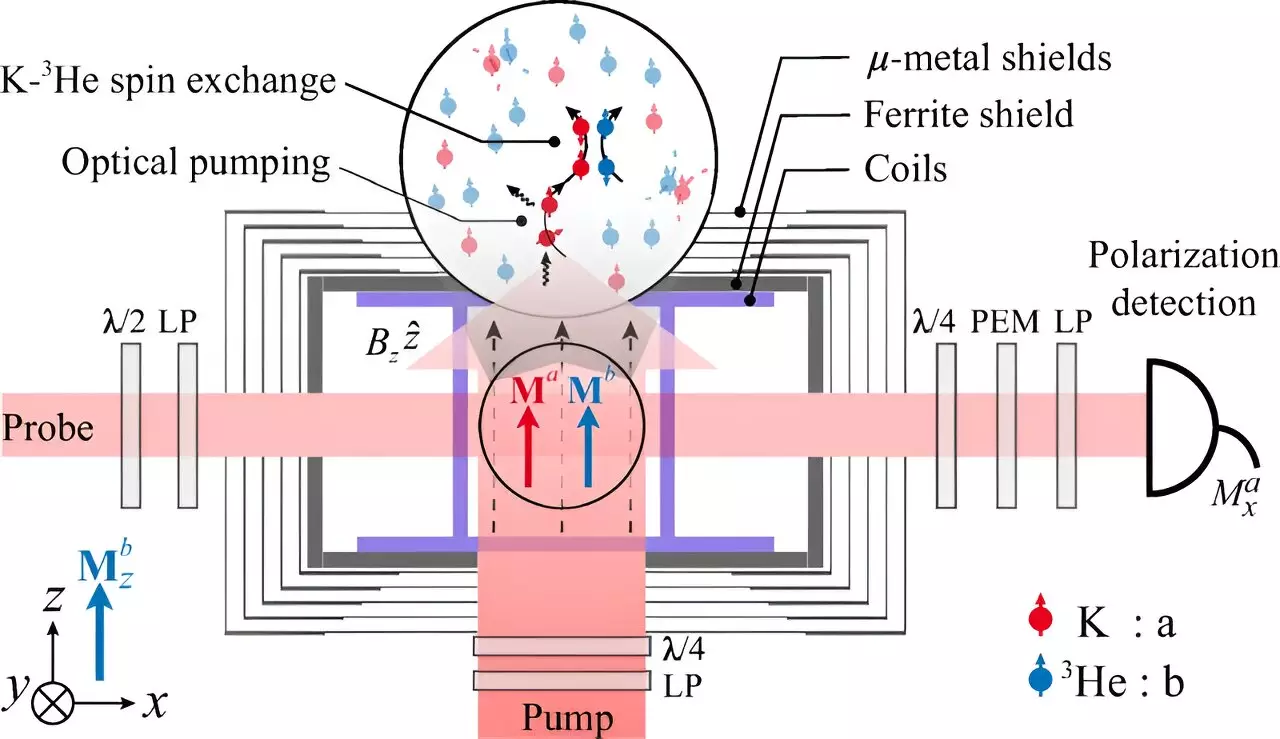Recent advancements in the field of precision measurement have ushered in new methods for addressing the challenges posed by magnetic noise interference. A research team spearheaded by Prof. Peng Xinhua and Associate Prof. Jiang Min from the University of Science and Technology of China (USTC) has made significant strides in this regard, focusing on the Fano resonance interference effect between mixed atomic spins. Their groundbreaking findings, recently published in *Physical Review Letters*, outline a prospective method for magnetic noise suppression that promises to mitigate magnetic noise by over two orders of magnitude. This achievement could have profound implications, particularly for experimental physics endeavors targeting exotic spin interactions and dark matter detection.
Over recent decades, interest in exotic spin interactions has surged, particularly those that exist beyond the confines of the standard model of particle physics. These interactions encompass a wide range of frontier areas such as investigations into spin-dark matter particle interactions and the theorized fifth force. The significance of these interactions cannot be understated, as they hold the potential to unravel some of the deepest mysteries of our universe. However, the challenge of measuring exceedingly weak magnetic signals—often obscured by various noise backgrounds—has hampered advancement in this field. The paramount need for enhanced measurement techniques becomes evident when considering the delicate nature of these signals, which can easily succumb to disruptions like magnetic noise.
Although atomic comagnetometers have been developed to exploit the interaction of dual atomic spins, they have predominantly demonstrated efficacy in low-frequency magnetic noise environments (below 1Hz). This constraint has critically limited the ability of researchers to delve into the largely uncharted territory of exotic spin interactions. The underlying technology has proven inadequate for detecting faint signals amidst significant noise interference, making it increasingly clear that a novel solution was necessary.
The research team developed a new technique centered on magnetic noise self-compensation effects, which they successfully applied in experiments involving a mixed system of potassium (K) and helium-3 (3He) gases. In this unique setup, laser-polarized potassium atoms facilitated the polarization and detection of nuclear spins in helium-3 via spin-exchange collisions. A key aspect of their approach involved adjusting the bias magnetic field and the orientation between the detection direction and the frequency of the external magnetic noise. This flexibility allowed researchers to effectively suppress higher frequency noise, achieving significant reductions that had previously eluded conventional methods.
A noteworthy contribution of the team was their ability to provide a comprehensive theoretical framework for the observed phenomenon, framed within the context of Fabry-Perot resonance interference cancellation. Through rigorous experimentation, researchers demonstrated that the self-compensation effect of magnetic noise could suppress interference from near direct current up to 200Hz, achieving suppression factors exceeding two orders of magnitude. Such levels of suppression not only enhance the detection capabilities of magnetic field measurements but also push the boundaries of sensitivity in magnetic detection systems.
The insights gained from this research hold promise for advancing several domains, particularly in fundamental physics research. The improved sensitivity to pseudomagnetic fields, attained by leveraging the magnetic noise self-compensation effect, could enhance detection capabilities to levels of approximately 0.1fT/Hz^{1/2} over a broader frequency spectrum. Ultimately, this work has the potential to accelerate progress in dark matter detection and the exploration of exotic spin interactions, paving the way for novel discoveries in our understanding of the universe’s elementary principles.
The innovative approach put forth by the research team at USTC signifies a major leap forward in overcoming the persistent challenge of magnetic noise interference. By employing the Fano resonance interference effect within a mixed spin system, they have opened new avenues for precision measurement, particularly in the quest for understanding enigmatic phenomena like dark matter. The implications of these findings are tangible, marking a pivotal moment that could influence the trajectory of experimental physics and our grasp of the universe’s fundamental elements.

